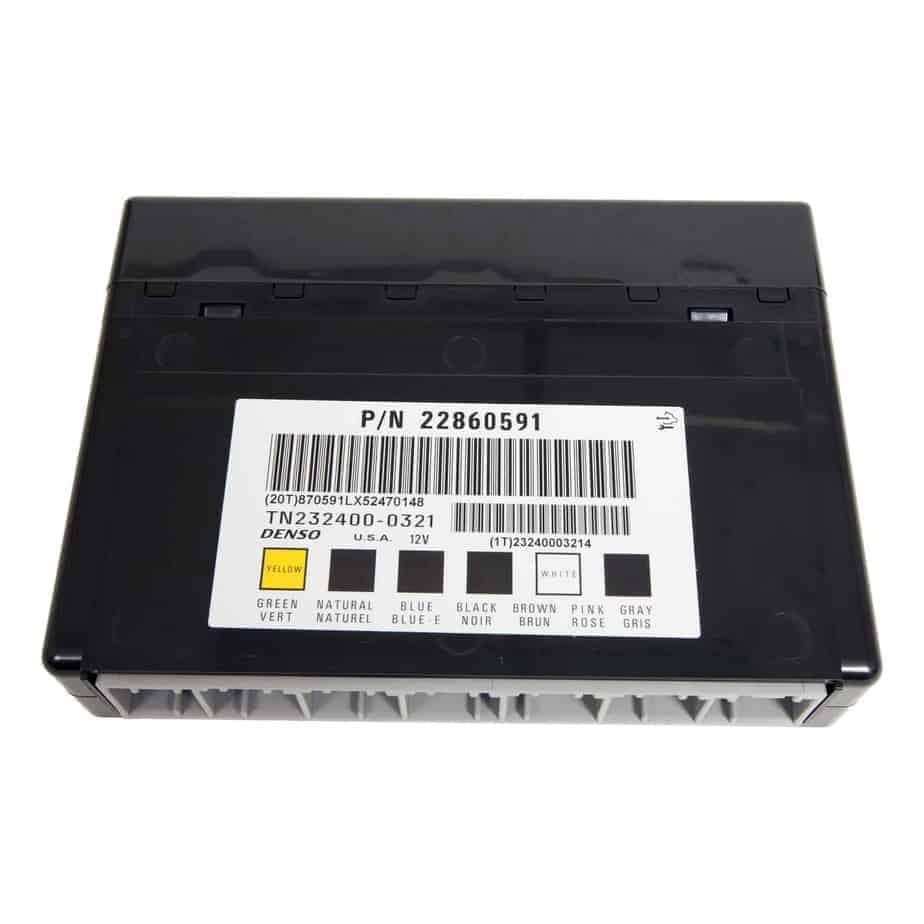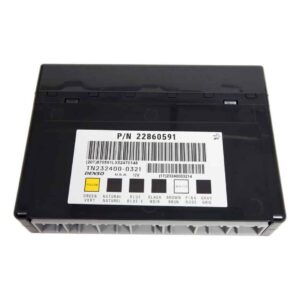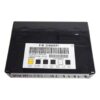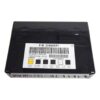Tired of Bizarre Electrical Gremlins in Your GM Vehicle?
As a technician with over two decades of experience, I’ve seen it all when it comes to failing Body Control Modules (BCMs). One minute the power locks work, the next they don’t. The security light flashes for no reason, or worse, the vehicle refuses to start. These aren’t random issues; they’re classic signs that your vehicle’s electronic nerve center—the BCM—is failing. This isn’t just an annoyance; it can compromise your vehicle’s security and functionality. Stop chasing ghosts in the machine and get the definitive fix with our Programmed GM BCM.
This isn’t just a part in a box. We take the hassle out of the repair by pre-programming this module to your vehicle’s specific Vehicle Identification Number (VIN) before it ships. This means no expensive trip to the dealership for programming. You get a BCM loaded with the latest GM software updates, ready for a straightforward installation, restoring the performance and reliability you depend on.
Case Study: A Tricky Diagnosis
A customer brought in their 2009 Chevy Tahoe last month with a list of strange symptoms: the radio would turn on and off by itself, the driver’s side window was unresponsive, and the “Service Theft System” message was constantly on. They had already replaced the battery and checked fuses with no luck. After connecting my scan tool, I saw multiple communication loss codes with various modules. This immediately pointed me to the BCM. A faulty BCM acts like a bad switchboard operator, scrambling messages between the vehicle’s electronic systems. We installed a VIN-programmed BCM, performed the necessary key relearn, and all the phantom issues vanished. It’s a common failure, but with a pre-programmed module, it’s a surprisingly simple fix.
Is Your Vehicle Showing These Symptoms?
- ✔ Intermittent or non-working power windows, door locks, or mirrors.
- ✔ Dash lights flickering, interior dome lights staying on, or headlights acting erratically.
- ✔ The security or anti-theft system light is illuminated, preventing the engine from starting.
- ✔ Inaccurate gauge readings or warning lights that have no apparent cause.
- ✔ Communication errors with a professional scan tool pointing to the BCM.
- ✔ Remote key fob not working even after replacing the battery.
A Straightforward Guide to Installation
- Safety First: Disconnect the negative terminal from your vehicle’s battery and wait a few minutes to ensure all systems are powered down.
- Locate the BCM: On most of these GM models, the BCM is located under the driver’s or passenger’s side of the dashboard, or in the center console area. Check your vehicle’s service manual for the exact position.
- Disconnect and Remove: Carefully unplug the electrical connectors from the old BCM. They have locking tabs that need to be depressed. Once disconnected, unbolt or unclip the module from its mounting bracket.
- Install the New Module: Mount your new, pre-programmed BCM in the same location and securely reconnect all the electrical harnesses. Ensure they click into place.
- Reconnect Power: Reattach the negative battery terminal.
- Perform Relearn Procedures: You will need to perform a security relearn (often called a Passlock or Passkey relearn) to sync your keys with the new BCM. This procedure can typically be done without special tools and instructions are widely available online for your specific model.
Important Post-Installation Steps
After installing your new Programmed GM BCM, a couple of final calibration steps are required to ensure full system functionality and safety. These procedures require a bi-directional scan tool.
- Airbag System Reset: To clear the airbag warning light, you must perform the ‘Setup SDM Primary Key in BCM’ procedure. This re-establishes communication between the new BCM and the Sensing and Diagnostic Module (SDM).
- Brake Pedal Position Sensor Calibration: On some models, the Brake Pedal Position (BPP) Sensor requires recalibration after a BCM replacement to ensure accurate brake light operation and stability control function.
If you are a DIYer and do not have access to a capable scan tool, a local independent shop can typically perform these final calibrations for you.
Verified Vehicle Compatibility
This module is a direct replacement for a wide range of GM vehicles and interchanges with numerous part numbers, including 10382479, 15828601, 22860591, and more. Please verify your original part number or consult the list below. This part fits:
- Acadia (2007-2012)
- Avalanche 1500 (2010)
- Caprice (2011-2013)
- Captiva Sport (2012)
- CTS (2008-2013)
- DTS (2006-2011)
- Enclave (2008-2012)
- Equinox (2007-2009)
- Escalade, ESV, EXT (2010)
- Express / Savana Vans (2008-2012)
- G8 (2008-2009)
- Hummer H2 (2008-2009)
- Impala (2006-2013)
- Lucerne (2006-2011)
- Monte Carlo (2006-2007)
- Outlook (2007-2010)
- SRX (2007-2009)
- STS (2010)
- Suburban 1500 (2010)
- Tahoe (2010)
- Torrent (2007-2009)
- Traverse (2009-2012)
- Vue (2008-2010)
- Yukon / Yukon XL 1500 (2010)
Frequently Asked Questions
How does the VIN programming process work?
After you complete your purchase, you will need to provide us with your 17-digit VIN. Our technicians use this number to access the latest official GM software for your specific vehicle build. We flash this software onto the BCM, so it’s ready to install and communicate with your car’s other systems right out of the box.
Will I need any special tools for the installation?
The physical replacement typically only requires basic hand tools like a socket set or screwdriver. However, to complete the job correctly, you will need to perform a key relearn procedure and may need a bi-directional scan tool for airbag and brake sensor calibrations as noted above. Many local shops can complete these final steps if you don’t have the tool.
Is this a new or used part?
This is a high-quality, tested replacement part that is guaranteed to restore your vehicle’s function. It is programmed with new, updated software from GM to ensure optimal performance.
What happens if I don’t perform the airbag and brake calibrations?
If the ‘Setup SDM Primary Key’ procedure is not done, the airbag warning light will remain on, and the supplemental restraint system may not function correctly. If the brake pedal sensor is not recalibrated on applicable vehicles, it could lead to issues with brake light operation or the electronic stability control system.
What is the list of part numbers this module replaces?
This unit is a direct replacement for the following GM part numbers: 10382479, 15093910, 15276271, 15299986, 15819552, 15828601, 15837419, 15872388, 15872421, 15880684, 15921352, 15921353, 15948438, 15948439, 20815898, 20839063, 20864767, 20864768, 20921435, 20921436, 20935349, 22860591, 25826124, 25826125, 25847588, 25847589, 25892622, 25910474, 25934762, 25934763, and 95151084.



